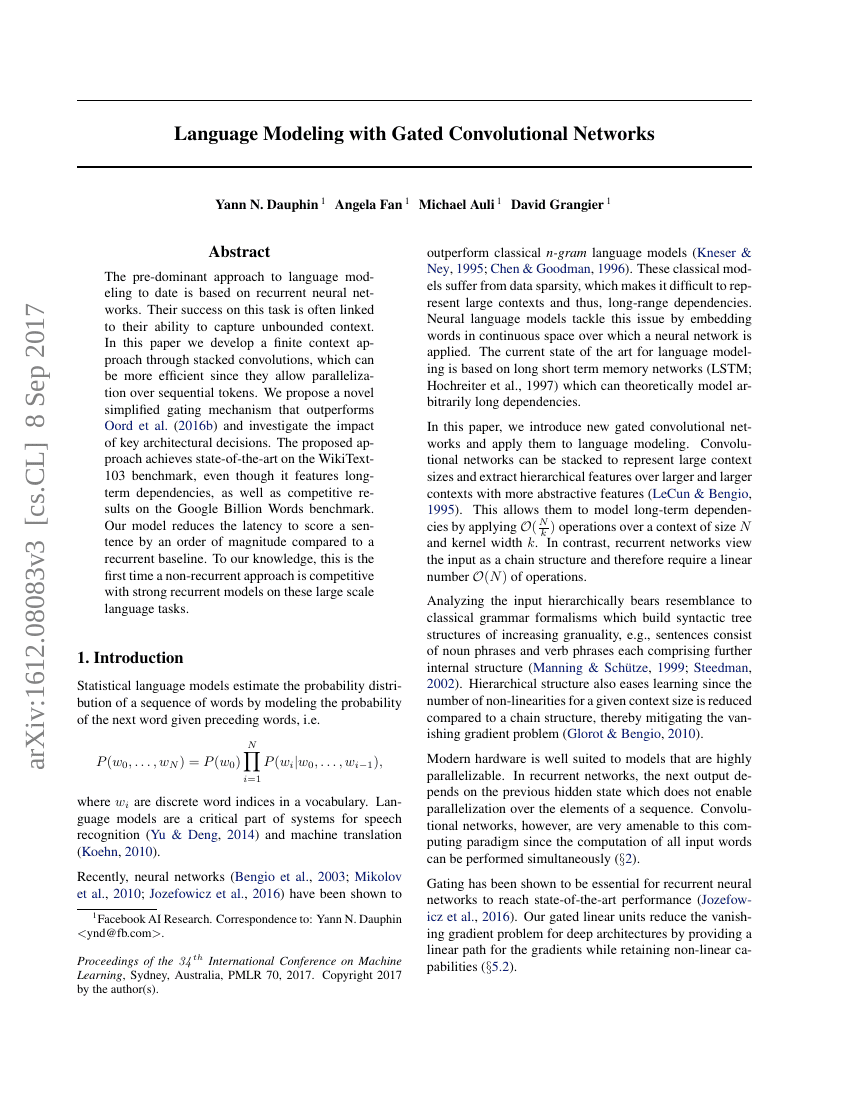Command Palette
Search for a command to run...
Yann N. Dauphin; Angela Fan; Michael Auli; David Grangier

Abstract
The pre-dominant approach to language modeling to date is based on recurrent neural networks. Their success on this task is often linked to their ability to capture unbounded context. In this paper we develop a finite context approach through stacked convolutions, which can be more efficient since they allow parallelization over sequential tokens. We propose a novel simplified gating mechanism that outperforms Oord et al (2016) and investigate the impact of key architectural decisions. The proposed approach achieves state-of-the-art on the WikiText-103 benchmark, even though it features long-term dependencies, as well as competitive results on the Google Billion Words benchmark. Our model reduces the latency to score a sentence by an order of magnitude compared to a recurrent baseline. To our knowledge, this is the first time a non-recurrent approach is competitive with strong recurrent models on these large scale language tasks.
Code Repositories
Benchmarks
| Benchmark | Methodology | Metrics |
|---|---|---|
| language-modelling-on-one-billion-word | GCNN-14 bottleneck | PPL: 31.9 |
| language-modelling-on-wikitext-103 | GCNN-8 | Test perplexity: 44.9 |
| language-modelling-on-wikitext-103 | GCNN-8 | Test perplexity: 37.2 Validation perplexity: - |
Build AI with AI
From idea to launch — accelerate your AI development with free AI co-coding, out-of-the-box environment and best price of GPUs.